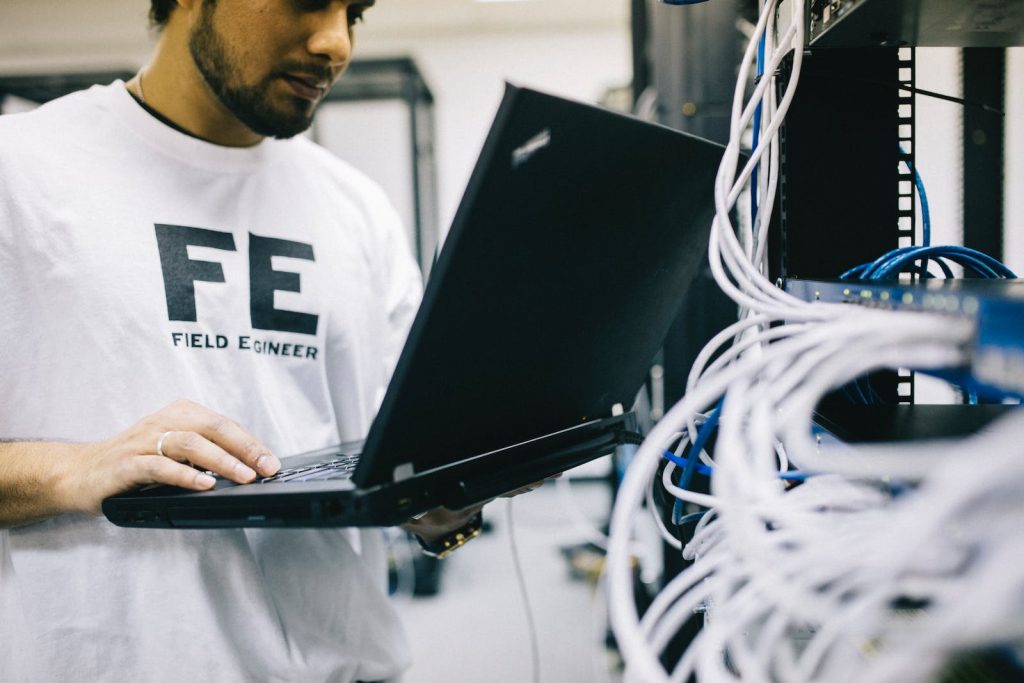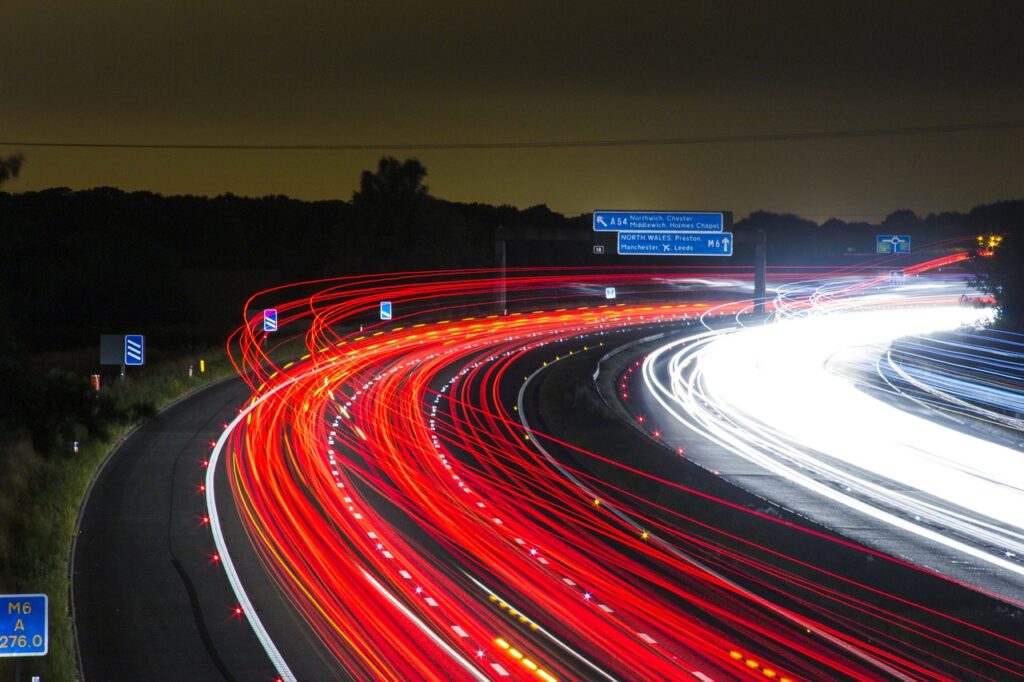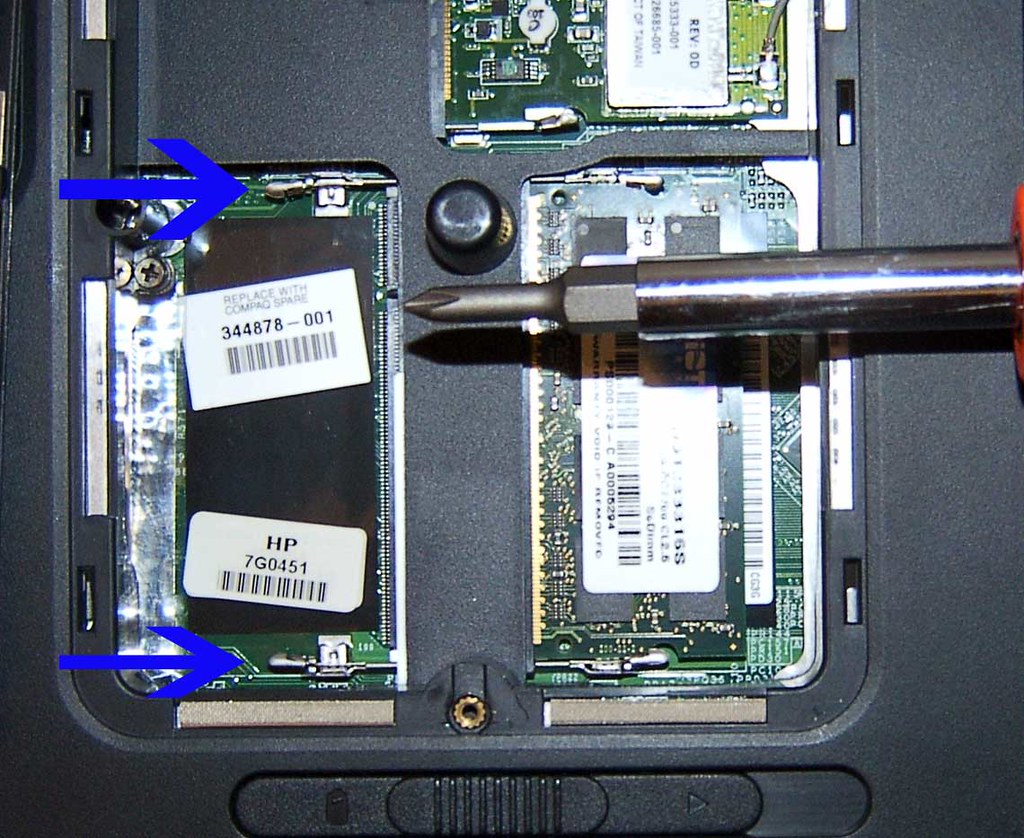This website may contain affiliate links, which means I may receive a commission if you click on a link and make a purchase. While clicking on these links won't cost you any extra money, they will help me keep this site up and running. Your support is appreciated!

Hey there, fellow laptop users! We’ve all been there – that moment when our trusty companion suddenly decides to act up. Whether it’s a slow start-up, a frozen screen, or an unresponsive keyboard, laptop issues can be a real headache. But fear not, because in this article, we’re going to dive into the common laptop issues and how to troubleshoot them like a pro. So grab your cup of coffee and let’s get your laptop back on track!
Table of Contents
- Power It Up: Starting with the Basics
- Feeling the Heat: Checking for Overheating Problems
- Connectivity Conundrums: Solving Wi-Fi and Bluetooth Issues
- Battery Blues: Maximizing Power and Charging Efficiency
- Silence Isn’t Always Golden: Resolving Audio Problems
- Keys to Success: Fixing Keyboard and Touchpad Glitches
- Visual Victory: Troubleshooting Display Anomalies
- Slow Ride: Speeding Up a Lagging Laptop
- System Restore: Rolling Back to Better Days
- Software Sleuthing: Unraveling Application and OS Mishaps
- Questions & Answers For How to Troubleshoot Common Laptop Issues
- The Way Forward
Power It Up: Starting with the Basics
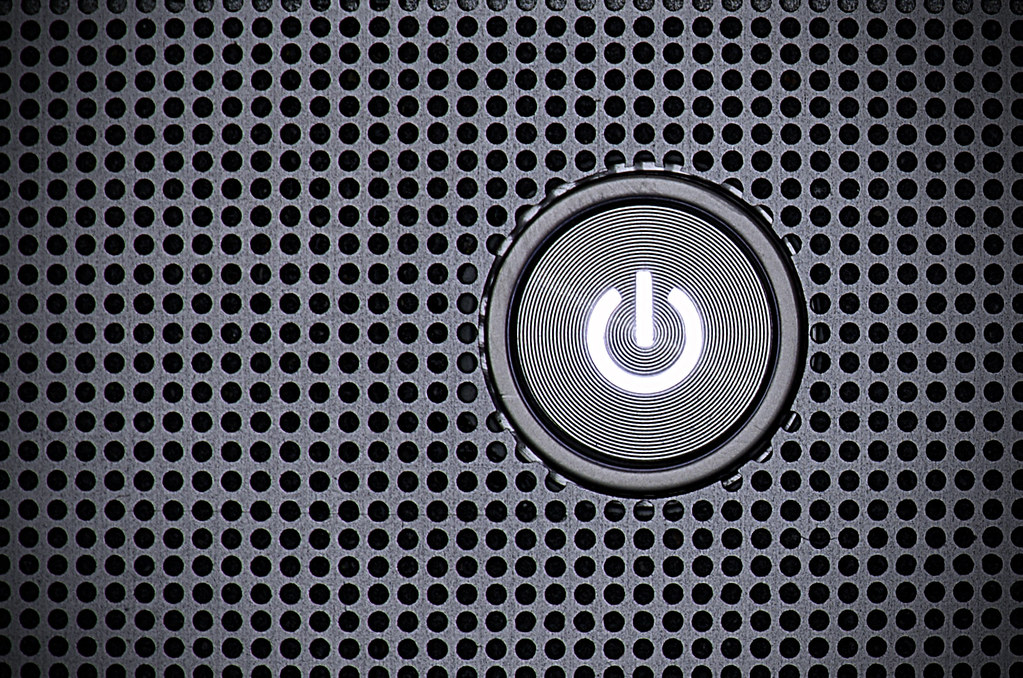
When it comes to troubleshooting common laptop issues, it’s important to start with the basics. Powering up your device and making sure it’s running smoothly is the first step in identifying and resolving any technical problems.
Here are some simple tips to help you get started:
- Check the power source: Make sure your laptop is plugged in and receiving power. If the battery is low, plug it in and allow it to charge for a while before attempting to start the laptop.
- Press the power button: Sometimes, a simple restart is all it takes to resolve minor issues. Press and hold the power button for a few seconds to turn off your laptop, then press it again to start it up.
Once you’ve powered up your laptop and ensured that the basics are in place, it’s time to move on to more specific troubleshooting steps.
For instance, if your laptop is still not turning on, you may need to check for hardware or software problems.
Stay tuned for the next part of our guide, where we’ll delve into more advanced troubleshooting techniques for common laptop issues.
Feeling the Heat: Checking for Overheating Problems
When it comes to troubleshooting common laptop issues, one of the most critical problems to watch out for is overheating. If your laptop is feeling hot to the touch or is exhibiting performance issues, it could be a sign of overheating.
Here’s how you can check for and resolve overheating problems:
- To start, check the vents of your laptop for dust and debris. Over time, these can build up and block the airflow, leading to overheating. Use a can of compressed air to gently blow out any dust from the vents, or consider taking your laptop to a professional for a thorough cleaning.
- Next, make sure your laptop is placed on a hard, flat surface to ensure proper airflow. Using a laptop cooling pad can also help to dissipate heat and prevent overheating.
- Additionally, consider adjusting the power settings on your laptop to reduce the strain on the system, which can also help to alleviate overheating issues.
Connectivity Conundrums: Solving Wi-Fi and Bluetooth Issues
Are you tired of dealing with frustrating Wi-Fi and Bluetooth issues on your laptop? Don’t worry, we’ve got you covered! Below, you’ll find some common connectivity conundrums and easy troubleshooting steps to help you get back to smooth sailing with your laptop’s connectivity.
First, let’s tackle Wi-Fi problems.
If you’re experiencing slow or inconsistent Wi-Fi, try the following troubleshooting steps:
- Check your Wi-Fi connection and make sure it’s strong and stable.
- Ensure that your laptop’s Wi-Fi adapter is functioning properly.
- Update your Wi-Fi driver to the latest version.
- Restart your router and modem to reset the connection.
Now, let’s move on to Bluetooth issues.
If you’re having trouble connecting your Bluetooth devices to your laptop, try these troubleshooting steps:
- Make sure your Bluetooth is turned on and discoverable.
- Check for any physical obstructions or interference that may be causing connectivity issues.
- Update your Bluetooth driver to the latest version.
- Try removing your Bluetooth device from the list of paired devices and re-pairing it with your laptop.
By following these simple troubleshooting steps, you can solve common Wi-Fi and Bluetooth issues on your laptop and enjoy seamless connectivity once again.
Don’t let connectivity conundrums slow you down – with a little troubleshooting, you’ll be back up and running in no time!
Battery Blues: Maximizing Power and Charging Efficiency
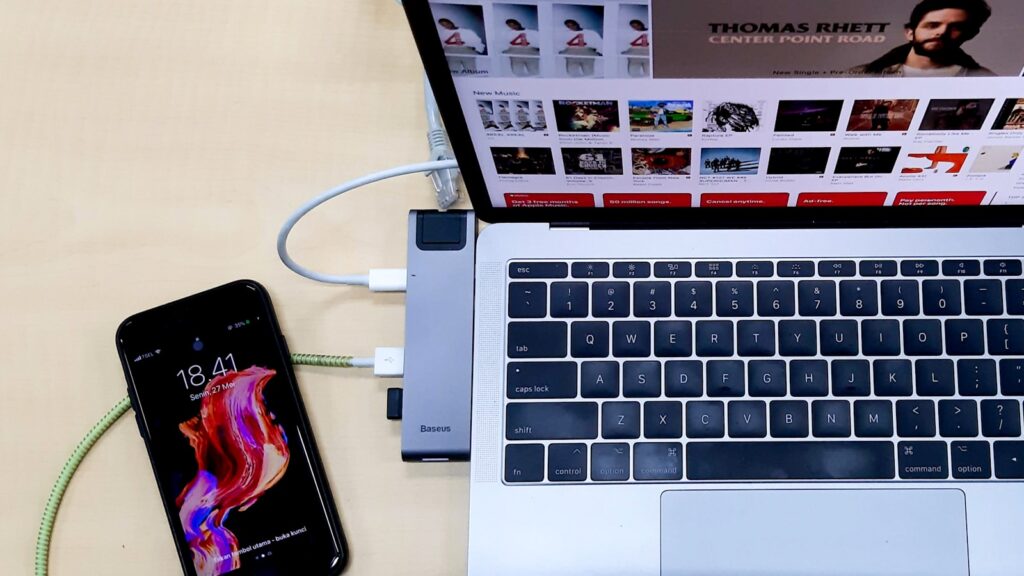
Having issues with your laptop battery can be a real downer, especially when you’re trying to get work done. But fear not, there are ways to troubleshoot and maximize power and charging efficiency that can help get your laptop back on track.
One common issue is a drained or weak battery that doesn’t hold its charge for long.
To troubleshoot this problem, try these steps:
- Check power settings: Adjust your laptop’s power settings to maximize battery life. Lower the brightness of your screen, set the sleep mode to a shorter time, and disable unnecessary background processes.
- Unplug unnecessary peripherals: Sometimes, having too many peripherals connected to your laptop can drain the battery faster. Unplug any unnecessary devices such as external drives, printers, or webcams to conserve power.
- Use the right charger: Make sure you’re using the correct charger for your laptop. Using a charger that isn’t compatible with your device can result in slower charging times and decreased battery efficiency.
In addition to troubleshooting your battery issues, there are also ways to maximize charging efficiency.
By following these tips, you can ensure that your laptop charges as quickly and efficiently as possible:
- Clean the charging port: Over time, dust and debris can accumulate in the charging port, leading to slower charging speeds. Use a small brush or compressed air to gently clean out the port and improve charging efficiency.
- Avoid overcharging: Leaving your laptop plugged in for extended periods can degrade the battery over time. Try to avoid overcharging by unplugging your laptop once it reaches full battery capacity.
- Use a cooling pad: If your laptop tends to get hot while charging, consider using a cooling pad to help dissipate heat and improve charging efficiency.
By following these troubleshooting and maximizing tips, you can help improve the overall performance and lifespan of your laptop battery.
Remember, it’s important to take care of your laptop battery to ensure that it continues to function properly.
Learning how to troubleshoot common laptop issues is an essential part of maintaining your device and keeping it running smoothly for years to come.
Silence Isn’t Always Golden: Resolving Audio Problems
Having trouble with audio on your laptop? Silence isn’t always golden, especially when it comes to resolving audio problems on your laptop. There are a few common issues that can cause audio problems, but with a little troubleshooting, you can get your sound back up and running in no time.
- One common issue that can cause audio problems on your laptop is a faulty or outdated audio driver.
Learning how to troubleshoot common laptop issues especially when it comes to audio is essential, since updating your audio driver can often resolve this issue.
To update your audio driver, simply go to the manufacturer’s website and search for the latest driver for your specific laptop model.
- Another common issue that can cause audio problems on your laptop is a loose or disconnected audio cable.
If your laptop has an external speaker or headphone jack, make sure the cable is securely plugged in. If you’re still not getting sound, try using a different audio cable to see if that resolves the issue.
If you’re still experiencing audio problems after troubleshooting these common issues, it may be time to contact a professional for further assistance. There may be a hardware issue that requires repair or replacement.
Knowing how to troubleshoot common laptop issues can be crucial in these situations but seeking professional help, when necessary, can save you time, money, and frustration in the long run.
Keys to Success: Fixing Keyboard and Touchpad Glitches
When it comes to troubleshooting common laptop issues, keyboard and touchpad glitches are at the top of the list. These problems can be frustrating, but fear not! With a few simple steps, you can get your laptop back to its full functionality in no time.
Here’s how to tackle these common issues:
Keyboard Glitches
If your laptop’s keyboard is acting up, try the following troubleshooting steps:
- Restart your laptop to see if the issue resolves itself.
- Clean the keyboard with compressed air to remove any debris that may be causing the problem.
- Check for any software updates that may address keyboard issues.
Touchpad Glitches
When your touchpad is acting glitchy, try these troubleshooting tips:
- Make sure your touchpad isn’t disabled. Look for a function key or setting that may have accidentally turned it off.
- Update your touchpad drivers to the latest version.
- If all else fails, consider using an external mouse as a temporary solution.
Visual Victory: Troubleshooting Display Anomalies

If you’re experiencing visual anomalies on your laptop display, fear not! Troubleshooting these common issues is easier than you might think. Whether you’re dealing with flickering screens, distorted images, or unusual colors, we’ve got you covered with some simple solutions to get your laptop back to its pristine visual glory.
First things first, check for loose connections. Sometimes, display issues can be as simple as a loose cable or connection. Make sure all cables are securely plugged in, and if you’re using an external monitor, try reconnecting it to see if that resolves the problem. It’s always best to rule out the simplest solutions before diving into more complicated troubleshooting.
If the issue persists, it might be time to update your graphics drivers. Outdated or corrupt graphics drivers can often cause display anomalies on your laptop. Head over to the manufacturer’s website or use a driver update tool to ensure you have the latest drivers installed. This simple step can often resolve many display issues and improve overall performance.
Slow Ride: Speeding Up a Lagging Laptop
Having a slow laptop can be frustrating, especially when you need to get work done in a timely manner. There are several common issues that can cause your laptop to lag, but luckily, there are easy troubleshooting methods to help speed it up.
If you find yourself dealing with a sluggish laptop, don’t worry – you can follow these simple steps to identify and resolve the problem.
One common issue that can slow down your laptop is the accumulation of temporary files and unnecessary data.
- To address this, you can start by running a disk cleanup to remove any unnecessary files that may be clogging up your system. You can also use a program like CCleaner to help clear out temporary files, internet history, and other clutter that may be slowing down your laptop.
- Another helpful tool is the built-in Windows Disk Cleanup utility, which can help you identify and delete unnecessary files, such as temporary internet files, system error memory dump files, and more.
Another potential cause of a slow laptop is an overloaded hard drive.
- If your hard drive is nearly full, it can significantly impact your laptop’s performance. You can free up space on your hard drive by removing any programs or files that you no longer need.
- You can also consider upgrading to a larger hard drive or adding an external drive to store excess data. Additionally, optimizing your hard drive using a tool like Disk Defragmenter can help improve your laptop’s speed by reorganizing files and making them easier to access.
Lastly, outdated software and drivers can also be a culprit for a slow laptop.
- It’s important to keep your operating system, drivers, and applications up to date to ensure optimal performance. Make sure to regularly check for updates and install them as needed.
- Additionally, running a malware scan using a reliable antivirus software can help identify and remove any potentially harmful programs that may be slowing down your laptop.
By following these troubleshooting methods, you can address common laptop issues and enjoy a faster, more efficient device.
System Restore: Rolling Back to Better Days
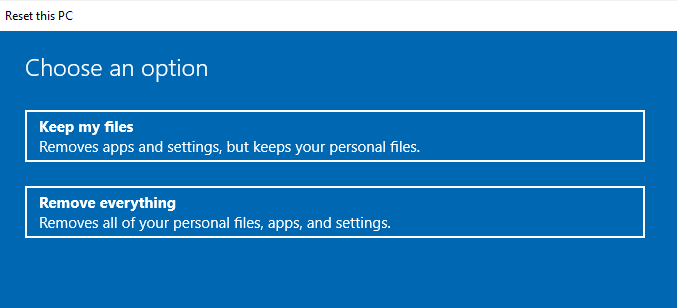
When your laptop starts acting up, it can be incredibly frustrating. Luckily, there are a few common troubleshooting steps you can take to get things back on track.
One important tool in your troubleshooting arsenal is the System Restore feature. This allows you to roll back your laptop to a previous state, which can often resolve issues that have cropped up recently.
Finding the System Restore feature on your laptop may be a bit different depending on your operating system, but it’s generally found in the Control Panel or Settings.
Once you’ve located it, you can choose a restore point from a list of available options.
These restore points are created automatically whenever important system changes are made, such as installing new software or drivers.
By going back to a time when your laptop was functioning properly, you may be able to troubleshoot and fix many common issues.
If you’re unsure of how to proceed with a System Restore, it’s a good idea to consult the manufacturer’s website for specific instructions for your laptop model.
Additionally, you can reach out to their customer support for further assistance.
Remember, it’s always a good practice to back up your important files before performing a System Restore, just in case anything goes wrong.
Software Sleuthing: Unraveling Application and OS Mishaps
| Common Laptop Issues | Troubleshooting Steps |
|---|---|
| Slow performance | 1. Close unnecessary programs and tabs. 2. Run a virus scan to check for malware. 3. Clean up disk space by deleting unwanted files. 4. Update software and drivers. |
| Overheating | 1. Clean the laptop’s cooling system and vents. 2. Use a cooling pad to help regulate temperature. 3. Avoid using the laptop on soft surfaces that can block airflow. 4. Update the laptop’s BIOS. |
| Blue screen of death (BSOD) | 1. Check for hardware or software conflicts. 2. Perform a system restore to a previous stable state. 3. Update device drivers and Windows OS. 4. Run a memory diagnostic to check for RAM issues. |
Dealing with common laptop issues can be frustrating, but with the right troubleshooting techniques, you can resolve them without the need for professional assistance. When your laptop starts acting up, it’s important to first identify the problem before jumping to conclusions. Take a deep breath and follow these simple steps to troubleshoot common laptop issues and get your device back on track.
If you’re experiencing slow performance, start by closing unnecessary programs and tabs. Running a virus scan to check for malware can also help improve your laptop’s speed. Additionally, cleaning up disk space by deleting unwanted files and updating software and drivers can make a significant difference in performance. These simple steps can make a world of difference in how your laptop operates.
Overheating can be a common issue for many laptop users. To address this problem, start by cleaning the laptop’s cooling system and vents. Using a cooling pad to help regulate temperature can also prevent overheating. It’s essential to avoid using the laptop on soft surfaces that can block airflow. Updating the laptop’s BIOS can also help manage its temperature more efficiently. By following these troubleshooting steps, you can prevent your laptop from overheating and potentially damaging its internal components.
Remember, taking proactive steps to address these issues can help extend the lifespan of your laptop and improve its overall performance.
Questions & Answers For How to Troubleshoot Common Laptop Issues

Why is my laptop running slowly?
There could be several reasons why your laptop is running slowly, including too many background applications running, low memory or storage space, or an outdated operating system. Try closing unnecessary applications, deleting temporary files, and running a disk cleanup to fix the issue.
Why won’t my laptop turn on?
If your laptop won’t turn on, it could be due to a dead battery, a faulty power adapter, or an issue with the hardware. Try connecting the power adapter to a different outlet, removing the battery and reinserting it, or seeking professional help to diagnose and fix the problem.
How do I fix laptop overheating issues?
Laptop overheating can be caused by dust buildup, a faulty cooling fan, or running too many intensive programs. Try cleaning the vents and internal components with compressed air, using a laptop cooling pad, or limiting the number of programs running simultaneously.
What do I do if my laptop keeps crashing or freezing?
Frequent crashes or freezes can be the result of outdated drivers, overheating, or malware. Try updating your drivers, running a virus scan, and ensuring proper ventilation for your laptop to solve this issue.
How do I troubleshoot a blank screen on my laptop?
A blank screen on your laptop could be caused by a faulty display or graphics card, loose cable connections, or a software issue. Try connecting your laptop to an external monitor, checking the cable connections, and updating your graphics drivers to resolve this problem.
Why is my laptop not connecting to Wi-Fi?
If your laptop is having trouble connecting to Wi-Fi, it could be due to a weak signal, an incorrect network configuration, or a faulty network adapter. Try moving closer to your router, resetting your network settings, or updating your network adapter drivers to troubleshoot this issue.
How can I fix a noisy laptop fan?
A noisy laptop fan can be caused by dust buildup, a failing fan, or high CPU usage. Try cleaning the fan and vents, replacing the fan if necessary, and closing unnecessary programs to reduce CPU usage and quiet the fan.
What should I do if my laptop is not charging?
If your laptop is not charging, it could be due to a faulty power adapter, a damaged charging port, or a drained battery. Try using a different power adapter, checking the charging port for damage, and replacing the battery if needed to address this issue.
How do I troubleshoot a malfunctioning keyboard or touchpad?
Malfunctioning keyboard or touchpad issues may be the result of hardware damage, driver issues, or accidental toggling of settings. Try updating your drivers, checking for physical damage, and adjusting your settings to fix these problems.
How can I address distorted audio or no sound from my laptop?
Distorted audio or no sound issues on your laptop could be caused by outdated audio drivers, hardware problems, or incorrect settings. Try updating your audio drivers, checking your audio connections, and adjusting your sound settings to resolve these issues.
The Way Forward
You’ve now armed yourself with the knowledge to tackle common laptop issues like a pro. No longer will error messages or frozen screens send you into a frenzy. Remember, a little patience and some troubleshooting techniques can work wonders. So the next time your laptop starts acting up, don’t panic. Take a deep breath, follow the steps we’ve outlined, and get ready to conquer those pesky laptop issues with ease. Happy troubleshooting!

